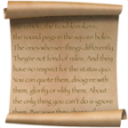Vyksa
Vyksa is one of the region’s most modern and fashionable cities and one of the oldest centres of Russian metallurgy. It is celebrated among artists and connoisseurs of public art, as a town where modern art is literally everywhere you look. It is best to come here for at least a couple of days, because it is a fair trek, and there is more than enough to keep you occupied.
A FEW FACTS
WHAT TO DO IN THE CITY
01
Take a stroll through Central Park
This beautiful park, laid out in the French-English style, and romantically named Lebediny Rai («Swan Paradise»), was founded in the XVIII century in the image of the parks of Versailles and Peterhof. Once there was a menagerie here, a theatre, and even a unique complex of greenhouses growing pineapples that were then delivered to the palace of Catherine the Great, but today you can still go for a walk here and maybe have a go on the rides in the amusement park. There are several ponds here, including Lebedinka Pond, where the famous swan couple Ruslan and Lyudmila live. Here you can also find a six-meter unicorn crafted by the Hungarian sculptor Gabor Miklos Soeke. This is in fact the symbol of Vyksa, because it is the unicorn that graces the city’s coat of arms. The park also boasts an amphitheatre and a rotunda with wooden decking, numerous works of art, and the Pavilion of the Future, a public space for lectures, workshops, exhibitions, and film screenings.
02
Visit the Batashev estate and the museum of the history of the Vyksa plant
The Batashev brothers were the founders of the local metallurgical plant, around which Vyksa grew. They discovered an ore deposit here, and then built as many as 9 factories. Vyksa was at that time, as indeed it still is, a leading center of Russian metallurgy producing goods that is known not only in Russia, but also abroad. Today, the estate is an XVIII century architectural monument of federal significance. It was built by the Batashev brothers, and today you can visit the Vyksa plant museum and learn about its founders, see the unique items that were preserved during its restoration, and visit the recreated XVIII and XIX century interiors.
03
Book a tour to the Vyksa OMK plant
The Vyksa OMK plant is the largest Russian manufacturer of metal pipes and railway wheels, and one of the largest in the world. Its territory is so vast that a regular bus service runs through it! If you want to see new technologies in action and feel the buzz of a state-of-the-art fully operational enterprise, then sign yourself up for a tour. If you find yourself in the grounds of the plant, do not miss the Shukhov water tower, which beguiles the eye with its hyperbolic shapes.
04
Marvel at the park of industrial street art
In the grounds of the plant, you simply cannot help but notice the park of industrial street art, the only such park in Russia to be located right on the territory of an operating enterprise.Here you will find the largest piece of graffiti in Russia and Europe, a work by the artist Misha Most, with an area of 10,000 square meters! Another true work of art is a giant fresco by the Socialist art founder Eric Bulatov, who came specially from Paris to work in Vyksa.
05
Study the street art
As you walk around Vyksa, every now and then you will come across some cool street art, and there really is an awful lot of it here. This is all the result of the Vyksa Festival (previously known as the «Art Ravine»), which has been held here each year for more than ten years, gathering the best street artists, musicians, and writers to its cause. The festival’s programme is jam-packed, so if you want to be literally at the center of cultural life, then you need to come to Vyksa in the summer.
06
Pay a visit to the Volna Cultural Center
The Volna Cultural Center, located on the banks of the Nizhny Prud (the «Lower Pond»), occupies a building constructed in the style of late Soviet postmodernism, and features a public space with an exhibition hall and an open workshop, as well as the Vyksa art residence, where you can meet the artists who spend their time exploring and drawing inspiration from the city.
07
Read contemporary literature in Ex Libris
Ex Libris holds creative workshops, master classes, concerts, theme nights, and exhibitions. This is a new modern space, where you are welcome to drop by if you suddenly want to work in silence, or just sit down to read a book. The library here has over 70,000 cool and contemporary books.
08
Learn about the history of the Vyksa temples and monasteries
The main temple of Vyksa is the Cathedral of the Nativity of Christ, located near the Batashev-Shepelev estate complex. It was built in 1773 on the initiative and financial support of the Batashev brothers, and their family tomb is located there. The architecture of the temple is based on the Russian classical style, although there are also some Baroque elements. The famous Iversky Convent was built here at the request of the Vyksa merchants. It was partially destroyed in 1927, and a recreation center was subsequently built in Vyksa using bricks from the convent wall. The convent itself is currently being restored, and one of its churches, the Church of the Assumption, is functional today, and divine liturgies are still held here.
09
Seek out the artwork VSYO ETO NE SON («All this is not a Dream»)
Probably one of the city’s most famous works of art is Timofey Radi's installation «All this is not a Dream», which is located in a place popularly known as the Forest Plantation. Once this place was deemed to be one of the most dangerous parts of Vyksa, and working for the Radi of this «dark place» served as a kind of «antidote». The territory here was re-landscaped, and locals came to perceive this place in a completely different way, and even began to look at the city in a whole new light. The luminous inscription is at its best in the evening and nighttime.










































